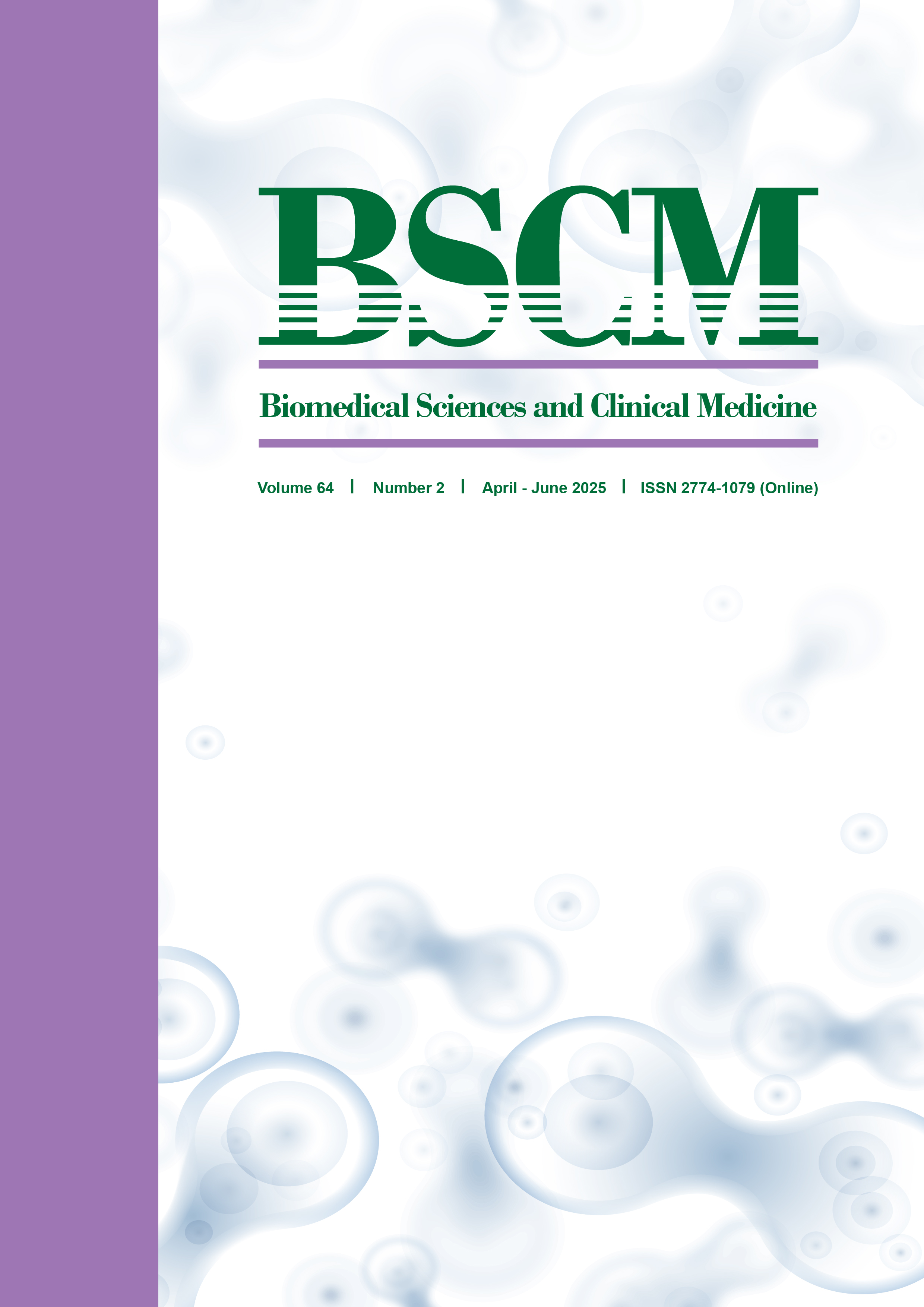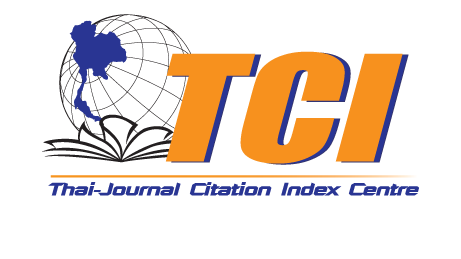Effect of Tranexamic Acid Infusion to Reduce Intraoperative Blood Loss in Large Meningioma: A Prospective Randomized Control Study (Preliminary Report)
Keywords:
tranexamic acid, meningioma, blood loss, blood transfusionAbstract
Objective Resection of intracranial meningioma has been related to significant blood loss. Intravenous tranexamic acid (TXA) has been shown to successfully attenuated blood loss and transfusion in various surgical procedures. However, the evidence has been limited in the surgical management of brain tumors. This study aims to evaluate the efficacy of intravenous TXA in reducing intraoperative blood loss and the need for blood transfusion during the surgical resection of intracranial meningiomas.
Methods We conducted a prospective, randomized double-blind controlled study aiming for a sample size of 44 patients. In this preliminary report, twenty-five patients aged 18-60 years with large intracranial meningioma undergoing elective meningioma resection were enrolled and randomized to receive either TXA or a placebo. “Large meningioma” was defined as a radiographic finding of a tumor with a diameter > 5 cm in at least 2 dimensions. The TXA group was administered TXA at 20 mg/kg over 20 minutes, prior to the operation, followed by an infusion of 1 mg/kg/hr until the end of the operation. The primary outcome measure was volume of intraoperative blood loss. Continuous variables were analyzed with Student’s t-test or the Mann-Whitney U-test depending upon the distribution of the data. Fisher’s exact test was used to compare categorical variables.
Results Twenty-five patients were randomized with 12 in the TXA group and 13 in the placebo group. Baseline characteristics of the patients in the two groups were similar. The median intraoperative blood loss volume was 1,925 mL (IQR=1,575) in the TXA group and 1,500 mL (IQR=1,700) in the placebo group (p = 0.904). The median of intraoperative packed red cells (PRC) transfusion volume was 801.5 mL (IQR=825.5) in the TXA group and 493 mL (IQR=856) in the placebo group (p = 0.883). There was no significant difference in blood transfusion volumes between the groups in first 24 hours after surgery (p = 0.581). The incidence of thromboembolic events was similar in the two groups (p = 1.0). No postoperative seizures occurred in either group during the study.
Conclusions TXA did not reduce intraoperative blood loss, the intraoperative transfusion requirement, and the transfusion requirements during the first 24 hours after surgery in patients who underwent large intracranial meningioma resection.
References
Ostrom Q, Cioffi G, Gittleman H, Patil N, Waite K, Kruchko C, et al. CBTRUS statistical report: primary brain and other central nervous system tumors diagnosed in the United States in 2012-2016. Neuro Oncol. 2019;21(Supplement_5):v1-v100. PubMed PMID: 31675094
Islim AI, Mohan M, Moon R, Srikandarajah N, Mills S, Brodbelt A, et al. Incidental intracranial meningiomas: a systematic review and meta-analysis of prognostic factors and outcomes. J Neurooncol. 2019;142:211-21.
Lemée J, Corniola M, Da Broi M, Joswig H, Scheie D, Schaller K, et al. Extent of Resection in Meningioma: Predictive Factors and Clinical Implications. Sci Rep. 2019;9:5944. PubMed PMID: 30976047
Choy W, Kim W, Nagasawa D, Stramotas S, Yew A, Gopen Q, Parsa AT, Yang I. The molecular genetics and tumor pathogenesis of meningiomas and the future directions of meningioma treatments. Neurosurg Focus. 2011;30:E6. PubMed PMID: 21529177
Goh K, Poon W, Chan D, Ip C. Tissue plasminogen activator expression in meningiomas and glioblastomas. Clin Neurol Neurosurg. 2005;107:296-300.
Sawaya R, Rämö O, Shi M, Mandybur G. Biological significance of tissue plasminogen activator content in brain tumors. J Neurosurg. 1991;74:480-6.
Goh K, Tsoi W, Feng C, Wickham N, Poon W. Haemostatic changes during surgery for primary brain tumours. J Neurol Neurosurg Psychiatry. 1997;63:334-8.
Hsu S, Huang Y. Characterization and prognostic implications of significant blood loss during intracranial meningioma surgery. Transl Cancer Res. 2016;5:797-804.
Wu W, Trivedi A, Friedmann P, Henderson W, Smith T, Poses R, et al. Association between hospital intraoperative blood transfusion practices for surgical blood loss and hospital surgical mortality rates. Ann Surg. 2012;255:708-14.
Budohoski K, Clerkin J, Millward C, O’Halloran P, Waqar M, Looby S, et al. Predictors of early progression of surgically treated atypical meningiomas. Acta Neurochir (Wien). 2018;160:1813-22.
Yates J, Perelman I, Khair S, Taylor J, Lampron J, Tinmouth A, et al. Exclusion criteria and adverse events in
perioperative trials of tranexamic acid: a systematic review and meta-analysis. Transfusion. 2019;59:806-24.
CRASH-3 trial collaborators. Effects of tranexamic acid on death, disability, vascular occlusive events and other morbidities in patients with acute traumatic brain injury (CRASH-3): a randomised, placebo-controlled trial. Lancet. 2019;394:1713-23.
Sprigg N, Flaherty K, Appleton J, Al-Shahi Salman R, Bereczki D, Beridze M, et al. Tranexamic acid to improve functional status in adults with spontaneous intracerebral haemorrhage: the TICH-2 RCT. Health Technol Assess. 2019;23:1-48.
da Silva C, de Freitas P. Large and giant skull base meningiomas: The role of radical surgical removal. Surg Neurol Int. 2015;6:113. PubMed PMID: 26167365
Behari S, Das KK, Kumar A, Mehrotra A, Srivastava AK, Sahu RN, et al. Large/giant meningiomas of posterior third ventricular region: falcotentorial or velum interpositum? Neurol India. 2014;62:290-5.
Yasar S, Kirik A. Surgical Management of Giant Intracranial Meningiomas. Eurasian J Med. 2021;53:73-8.
Hooda B, Chouhan R, Rath G, Bithal P, Suri A, Lamsal R. Effect of tranexamic acid on intraoperative blood loss and transfusion requirements in patients undergoing excision of intracranial meningioma. J Clin Neurosci. 2017;41:132-8.
de Carvalho Barros L, Avancini C, Goncalves P, Paiva W, Gurgel R, Oliveira A. Efficacy, safety and dose patterns of tranexamic acid in meningioma surgery: a systematic review and updated meta-analysis of randomized controlled trials. Neurosurg Rev. 2025;48:23. PubMed PMID: 39760793
Opalak C, Parry M, Rock A, Sima A, Carr M, Chandra V, et al. Comparison of ABC/2 estimation and a volumetric computerized method for measurement of meningiomas using magnetic resonance imaging. J Neurooncol. 2019;144:275-82.
Ravi G, Panda N, Ahluwalia J, Chauhan R, Singla N, Mahajan S. Effect of tranexamic acid on blood loss, coagulation profile, and quality of surgical field in intracranial meningioma resection: A prospective randomized, double-blind, placebo-controlled study. Surg Neurol Int. 2021;12:272. PubMed PMID: 34221603
Rebai L, Mahfoudhi N, Fitouhi N, Daghmouri M, Bahri K. Intraoperative tranexamic acid use in patients undergoing excision of intracranial meningioma: Randomized, placebo-controlled trial. Surg Neurol Int. 2021;12:289. PubMed PMID: 34221620
Lin Z, Xiaoyi Z. Tranexamic acid-associated seizures: A meta-analysis. Seizure. 2016;36:70-3.
Komotar R, Raper D, Starke R, Iorgulescu J, Gutin P. Prophylactic antiepileptic drug therapy in patients undergoing supratentorial meningioma resection: a systematic analysis of efficacy. J Neurosurg. 2011;115:483-90.









